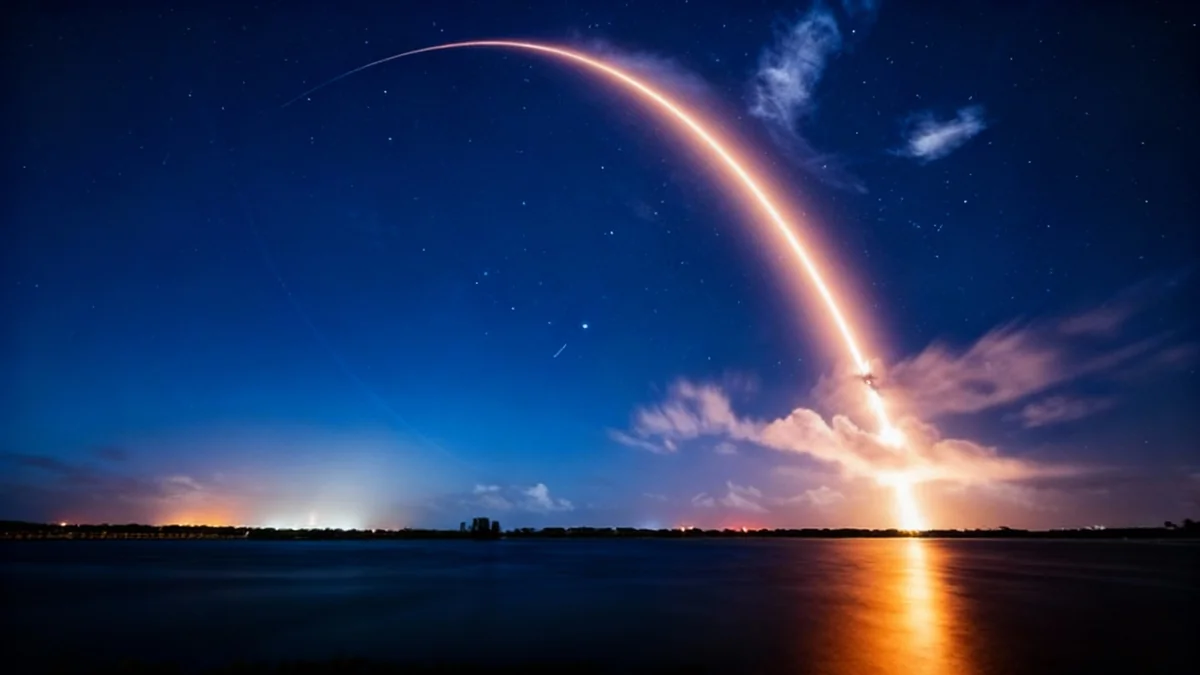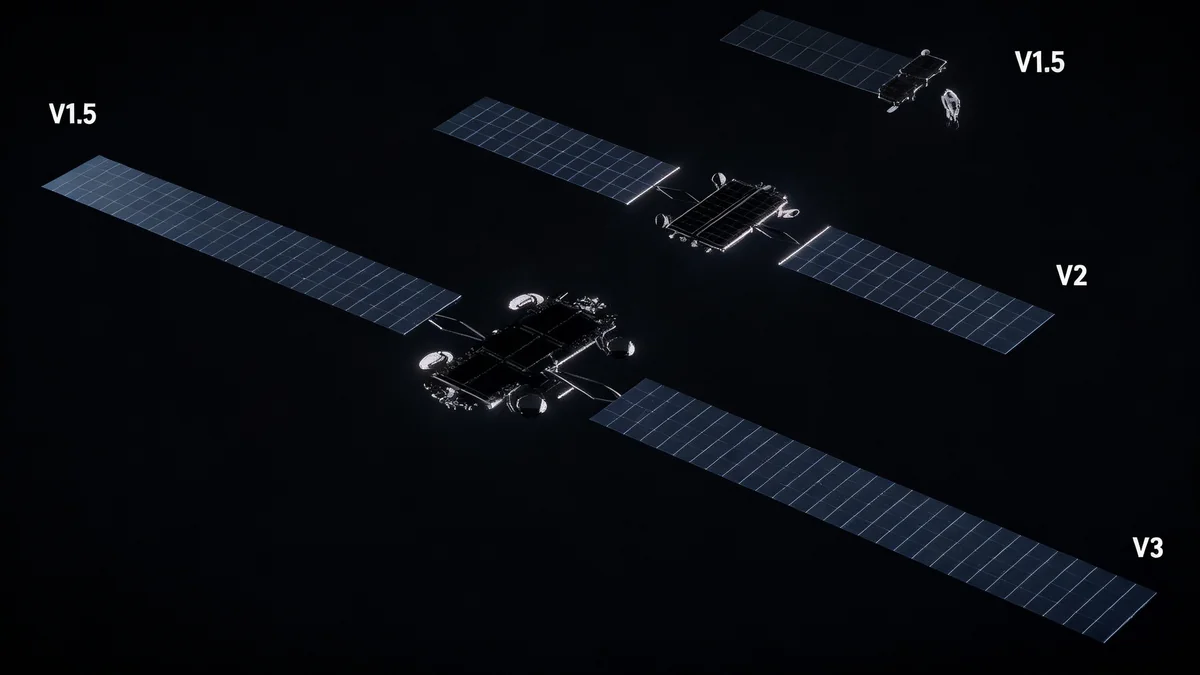SpaceX is scheduled to launch its third consecutive Falcon 9 rocket from Vandenberg Space Force Base on October 2, 2025, a first for the company's West Coast operations. The mission, designated Starlink 11-39, will carry 28 Starlink V2 Mini satellites into low Earth orbit and marks the 125th Falcon 9 flight of the year.
The launch is set for 6:21 a.m. Pacific Daylight Time from Space Launch Complex 4 East (SLC-4E). This flight highlights an increased launch tempo from the California base, partly influenced by recent tropical weather activity that has impacted operations at the company's Florida launch sites.
Key Takeaways
- Mission: Starlink 11-39, carrying 28 V2 Mini satellites.
- Launch Vehicle: Falcon 9 booster B1097, on its second flight.
- Date and Time: October 2, 2025, at 6:21 a.m. PDT from Vandenberg SFB.
- Operational Milestone: First time SpaceX has launched three consecutive missions from Vandenberg without an intervening Florida launch.
- Booster Landing: The first stage will attempt a landing on the droneship 'Of Course I Still Love You' in the Pacific Ocean.
Mission Details and Objectives
The primary goal of this mission is to continue the deployment of SpaceX's Starlink satellite constellation. The 28 Starlink V2 Mini satellites on board are designed to provide high-speed, low-latency internet service to locations around the world. Deployment of the satellites is expected to occur just over an hour after liftoff.
This will be the 47th launch from Vandenberg in 2025, underscoring the growing importance of the West Coast launch facility to SpaceX's overall strategy. The company has steadily increased its operational capacity at the site to support its ambitious launch schedule.
Booster and Landing Statistics
- Booster ID: B1097
- Previous Flight: Starlink 17-8 on September 3, 2025
- Target Landing: If successful, this will be the 155th landing on the 'Of Course I Still Love You' droneship.
- Overall Milestone: It will also mark the 514th successful booster landing for SpaceX to date.
The Falcon 9 first-stage booster, B1097, will perform a controlled descent after separating from the second stage. Approximately eight and a half minutes into the flight, it will attempt an autonomous landing on the droneship stationed in the Pacific Ocean. The reusability of Falcon 9 boosters is a core component of SpaceX's business model, enabling a high launch frequency and reduced costs.
A Shift in Launch Cadence
This mission marks a significant operational achievement for SpaceX's Vandenberg team. It is the first time since the Falcon 9's debut in 2010 that three missions will have launched consecutively from the West Coast without a flight from either Cape Canaveral Space Force Station or Kennedy Space Center in between.
This unusual sequence is likely influenced by recent weather patterns in the Atlantic Ocean. Tropical systems, including Hurricane Humberto and Hurricane Imelda, created hazardous conditions that disrupted launch preparations and recovery operations at the Florida sites. The National Hurricane Center continues to monitor disturbances that could affect the region.
Previous Back-to-Back Vandenberg Launches (UTC)
While three consecutive launches is a new record, there have been several instances of two back-to-back missions from the site:
- Starlink 17-9 (Sep. 6, 2025) and SDA T1TL-B (Sep. 10, 2025)
- Starlink 11-11 (April 7, 2025) and NROL-192 (April 12, 2025)
- Starlink 11-8 (Jan. 21, 2025) and Starlink 11-6 (Jan. 24, 2025)
Kiko Dontchev, Vice President of Launch for SpaceX, recently acknowledged the West Coast team's performance and the impact of weather on the overall launch manifest.
"Special shout out to the entire west coast team for their first ever 8 launch/month. It’s also the first time since October 2019 that Vandy launched 50% or more of the manifest."
Dontchev also noted that the company was "one tropical system away from hitting 17 [launches] in September" across all its launch pads, highlighting the high operational tempo the company maintains.
Expanding West Coast Operations
SpaceX has been actively working to increase its launch capacity from Vandenberg Space Force Base. According to the U.S. Air Force, the company is currently permitted to conduct up to 70 launches per year from the West Coast.
However, SpaceX has proposed a significant expansion. The company is seeking approval to increase its annual launch limit to 100 missions from Vandenberg. This plan involves utilizing both Space Launch Complex 4 East (SLC-4E) and the nearby Space Launch Complex 6 (SLC-6).
The proposal for SLC-6 is particularly notable, as it would be modified to support up to five Falcon Heavy launches per year. The Falcon Heavy is SpaceX's super heavy-lift launch vehicle, used for deploying large national security payloads and sending missions to deep space.
Upcoming Missions from Vandenberg
Beyond the continuous stream of Starlink missions, several key customer flights are scheduled to launch from Vandenberg before the end of 2025. These missions highlight the base's role in supporting both commercial and government space activities.
- Space Development Agency (SDA): The next launch for the SDA's military satellite constellation is scheduled for no earlier than October 14. The agency is aiming for a near-monthly launch cadence to build out its network.
- Transporter-15: A dedicated rideshare mission is planned for November, carrying numerous small satellites for various commercial and government customers.
- Sentinel-6B: Also slated for November, this is a major Earth observation mission. It is a partnership between NASA, the European Space Agency (ESA), EUMETSAT, NOAA, and the French space agency CNES. The spacecraft will monitor global sea levels.
The increasing frequency of launches and the diversity of payloads demonstrate Vandenberg's critical role in providing access to polar orbits, which are ideal for Earth observation and certain communication satellite constellations. This sustained activity is transforming the facility into one of the world's busiest spaceports.





